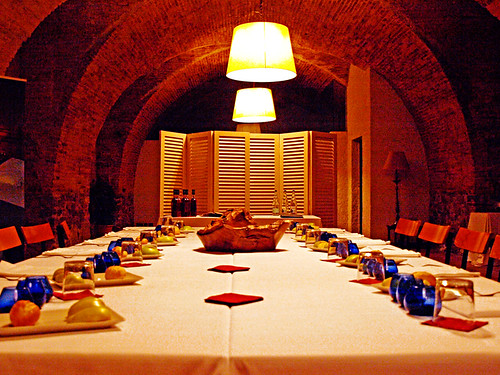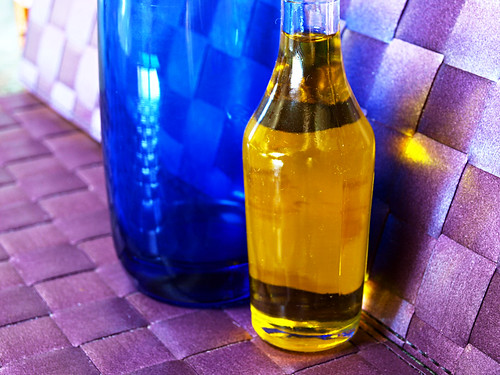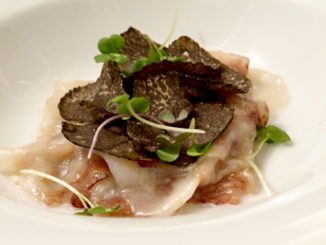At the tail end of a day that involved munching calçots, becoming a casteller and quaffing the finest organic Priorat wine, learning how to taste olive oil seemed a suitably original and possibly bizarre way to end a day full of ‘firsts’.
After a cleansing cava or two in the courtyard of the Hostal Sport Hotel in Falset in the company of the chic, charming and social media savvy Marta Domènech, Director of the intimately friendly 90 year-old family run hotel, we took our tasting positions in the hotel’s Les Voltes Hall. It was an appropriate venue for tasting olive oil given that it began life as an oil mill in the 18th century.
So far, so straightforward. But the contents on the long, wide table in the hall threw me a curve ball. I don’t know what I was expecting – not plates with a few slices of apples and rows of what looked like pretty, blue glasses that seemed just the job for holding tea-lights.
Closer inspection revealed the tea-light holders contained a liquid. You don’t have to be Sherlock to figure out what. The big question was why put olive oil in smoky, blue glasses and not clear ones, making it impossible to see if the liquids inside were pale yellow or deep green?
The answer was our first lesson in tasting olive oil. The quality of olive oil isn’t determined by its colour. We expect the darker oils to be better quality; hiding their colours means that there are no preconceptions about taste. Smart eh?
And the apple? It cleanses the palate between tastings. Apparently tart apples work best for this – think Granny Smith.
How to Taste Olive Oil
Our senses were given a quick but thorough pep talk by our olive oil tasting expert before we were let loose on the goods.
- Give the glass a cuddle, or in other words cup it in one hand to slightly warm it, cover it with your other hand and give it a gentle swirl. This will unlock the aromas; the covering hand preventing them from escaping before you can get your nose in amongst them.
- Stick your nose in the glass and take a good, long whiff. If you’ve got a good nose, this is when you’ll identify distinctive aromas.
- Take a generous sip, or slurp. Slurping the oil allows it to pass into your mouth with some air which apparently helps the flavour become better acquainted with your senses. Plus you get to make silly noises.
- Swallow the oil; this can result in a sort of aftershock on the back of the throat with pungent oils even stinging slightly.
Tasting Olive Oil in Practice
Following the steps above we tried the three oils in front of us. The first sip it tasted a bit like… err tasting oil. But then as I allowed the oil to sit on my tongue for a bit before swallowing, my senses roused themselves and took notice. The first, arrels (I think), was pleasant enough but not particularly distinctive in smell or flavour. However, with the second, cavaloca, I started to get something – a hint of freshly cut grass. The third, arbequina, was the Mr Personality of the trio; it had a lively, peppery attitude that assertively stamped its presence on the back of the throat. It was my favourite but some others preferred the freshly cut grass oil – like so many things, it’s a matter of personal preference.
Clearly it takes a lot of practice to be able to identify various aromas and flavours but the three we tasted acted as a good introduction that illustrated the huge differences in olive oils. Learning to taste olive oil was a surprisingly enjoyable experience and nowhere near as bizarre as I’d expected it to be.
Now when anyone asks me to dinner I’m tempted to slurp the olive oil before drizzling it on my salad. I reckon I’ll get a few shocked looks but boy will my hosts be impressed when I explain why I’m doing it.
As well as acting as a venue for olive oil tasting, the Hotel Hostal Sport is a bit of a gourmet’s dream of a place to base yourself for exploring Priorat’s vineyards and delectable countryside. I was gutted I didn’t actually get to stay there.
Jack is co-owner, writer and photographer for BuzzTrips and the Real Tenerife series of travel websites as well as a contributor to online travel sites and travel magazines. Follow Jack on Google+







Be the first to comment